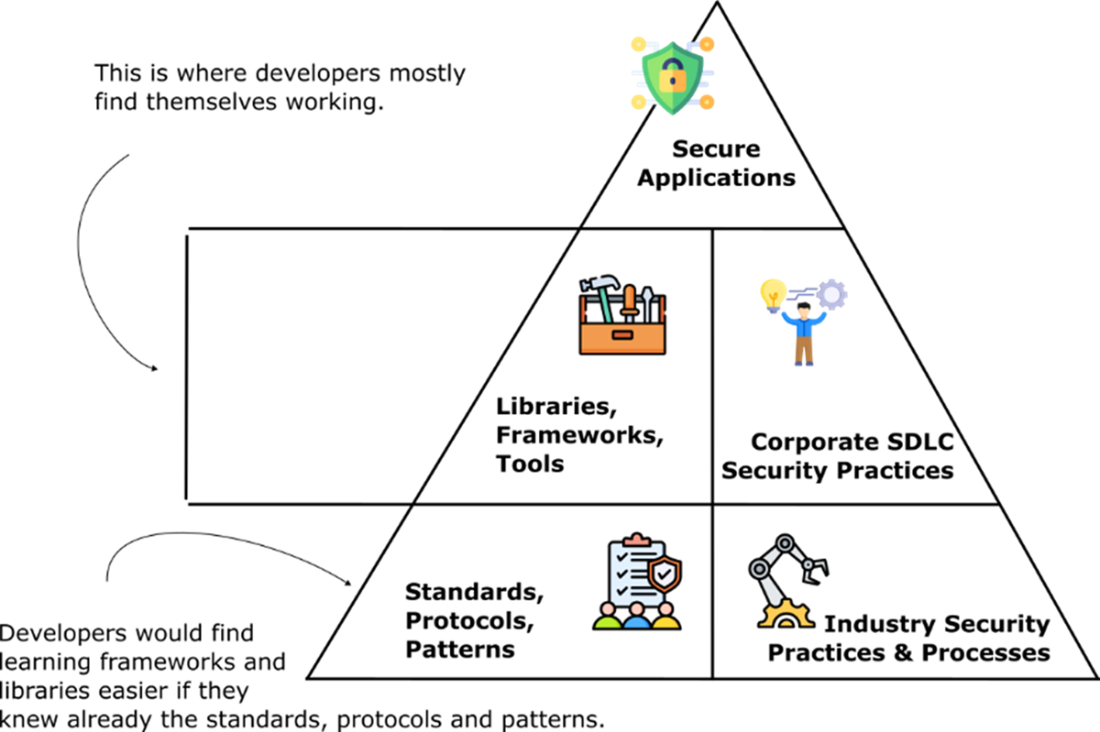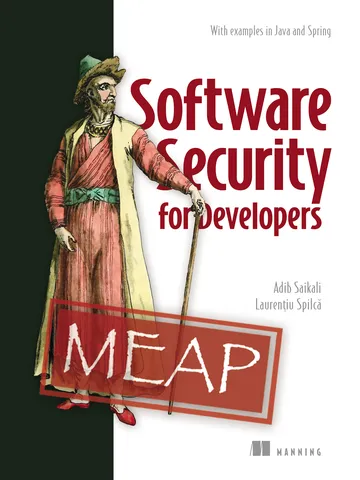1 Making Sense of Application Security
Modern software faces relentless, high-impact attacks that now span every layer of the stack—from hardware to browser JavaScript—making security a shared responsibility across engineering roles. High-profile breaches illustrate the steep financial, operational, and reputational costs, prompting organizations to elevate security leadership and treat severe incidents as potentially existential risks. The chapter frames application security as a practical, business-critical discipline that developers must embrace, not an optional specialization.
This reality reshapes developer work: teams are expected to use security features correctly across all products, conform to corporate standards and audits, design with security in mind, and participate in DevSecOps practices. Libraries and frameworks alone are not enough; effectiveness depends on understanding the standards, protocols, and patterns they implement, which makes configuration and debugging far easier. The chapter also underscores software supply chain risk—widespread dependency reuse introduces vulnerabilities and backdoors—advocating automated scanning in CI/CD, continuous rescans as advisories evolve, rapid patch pipelines, and disciplined dependency management (including avoiding internal, unsupported APIs) to keep upgrades feasible and safe.
Security spans many roles—from mathematicians and cryptographers to standards authors, implementers, framework builders, corporate InfoSec, auditors, and attackers—but developers need only enough of each area to apply the right tools wisely and collaborate effectively. The book concentrates on the developer’s lane: foundational cryptography, widely used protocols and standards, and practical application through familiar libraries, with lessons transferable beyond any single language. By the end, readers should be able to recognize risks, design with identity and authorization in mind, secure inter-service communication, spot and fix common flaws, pass audits confidently, and make informed, security-first design choices.
Headlines showcasing major recent data breaches and security vulnerabilities, emphasizing the widespread impact on millions of users and the persistent threat to digital security.

Layers at the top depend on the layers below them. All the layers are required to produce secure application. The standards, protocols, and patterns used to secure applications are the primary focus of this book, they are the foundation that you need to use security libraries in your application effectively.

While developers often focus on libraries, frameworks, and tools at the mid-level, true security stems from foundational knowledge of standards, protocols, and patterns, as well as adherence to corporate and industry security practices. Bridging the gap between these layers leads to more effective and secure development.

The spectrum of technical roles involved in computer security roles and responsibilities

Summary
- Security vulnerabilities can exist at every layer of the stack, from hardware (e.g., Meltdown, Specter) to application code.
- Security is everyone’s responsibility, not just InfoSec teams - developers play a central role.
- The business impact of breaches is massive (e.g., Marriott, Equifax), often costing millions or even billions.
- CISOs expect developers to:
- Use all product security features
- Follow corporate security standards
- Design and implement secure applications
- Embrace DevSecOps practices
- Security libraries (like Spring Security) are essential but hard to use unless you understand the underlying standards and protocols.
- Supply chain attacks (e.g., Equifax Apache Struts, Event-Stream Bitcoin theft) highlight the need for vigilance in managing dependencies.
- Automated vulnerability scanning in CI/CD pipelines is a best practice to detect and fix issues quickly.
- Stick to published APIs in libraries to ensure maintainability and security over time.
- Different roles contribute to security: mathematicians, cryptographers, standards engineers, framework engineers, InfoSec teams, auditors, and developers.
- Developers don’t need deep expertise in all these roles, but they must understand enough to apply standards and use libraries correctly.
- This book teaches developers the foundations (cryptography, protocols, standards) so they can confidently build secure, reliable applications.
 Software Security for Developers ebook for free
Software Security for Developers ebook for free